
Making a crustless quiche puts the focus on the filling. The classic egg and cream mixture that often incorporates meat, vegetables and cheese can serve as a breakfast dish, lunch entree with a soup or salad, or even a hearty dinner. The ability to bake it in different types of dishes only increases quiche's versatility. Whether leaving off the crust to save calories or carbs, or simply for simplicity, a crustless quiche can bake in nearly any baking pan or casserole dish.
Individual Quiche
Pre-portion your quiche into individual smaller quiches by dividing the mixture and baking in greased ceramic or stoneware ramekins. Chop or dice veggies and meats into small pieces to avoid large whole broccoli florets, for instance, taking up an unbalanced amount of space in the quiche. Ground meats work well for individual quiches as well. Fill ramekins two-thirds full with the quiche mixture. Place the ramekins on a cookie sheet and bake in a 350 degree Fahrenheit oven. Start checking for doneness after 15 minutes. Quiches are done when they appear set but still moist in the center.
Pie Plate
Even without the crust, a quiche cooks excellently in a pie plate or tart dish, just as it would with the crust. Grease the pie plate well before pouring in the quiche mixture. To avoid forming an egg-y skin in lieu of the crust, as the edges cook unevenly from the rest of the quiche, reduce the oven's temperature and increase the baking time from what would normally work for a quiche with the crust. When the center is just set, turn off the oven and open the oven door just a bit. Allow the quiche to cool and set further in the oven. This step helps prevent sinking in the center.
Springform Pan
When the crustless quiche needs to hold its perfect round form for presentation on an elegant platter or cake plate, consider baking it in a springform cake pan. Remove the bottom from the springform pan and use it to cut a circle of parchment paper to line the bottom of the pan and prevent sticking. Grease the sides. If your springform pan isn't watertight, wrap the outside in foil. After pouring in the quiche mixture, place the springform pan in a larger pan filled with water that comes about halfway up the sides of the springform pan. The water bath helps the quiche cook more evenly. Place the springform pan in its water bath in the oven and bake as usual. Run a knife around the sides of the springform pan before unmolding the quiche onto a platter or serving plate.
Casserole Dish
When cooking a crustless quiche for a crowd, consider baking it in a large casserole dish. Double or triple the recipe depending on the size of your pan. This method works equally well regardless of the shape of the dish. Pour the quiche into the pan until it reaches two-thirds up the sides of the dish. Increase baking time as necessary for the increased amount of volume, but decrease the oven's temperature to help bake the quiche evenly. Cover if necessary toward the end of the baking time to prevent browning on the top.
Other Options
Consider nontraditional dishes to cook your crustless quiche. Any oven-safe dish will work. Instead of using ramekins for individual quiches, try cooking them in a muffin tin. Either grease the cups or line them with cupcake liners to prevent sticking. Pour the quiche mixture into a greased stoneware mug, bake and and serve directly from the mug. Reduce the overall baking time to account for the smaller quiches. Cook a larger crustless quiche in an oven-safe skillet or cake pan. Silicone loaf, cake or muffin pans work well for crustless quiche as they reduce sticking. Support the silicone pan on a cookie sheet to help remove it from the oven as well as catch any overflow liquid that falls as the quiche bakes.
Related Articles

How to Bake Custard in Ramekins

How to Make a Tall Fluffy Cheesecake

How to Bake an Apple Pie in a ...
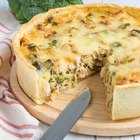
Low-Fat Breakfast Quiche

How to Bake With a Roaster
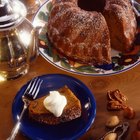
How to Convert a Pan Cake to a Bundt ...

Breakfast Egg Casseroles for Diabetes
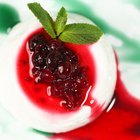
How to Cook Mini Cheesecakes in Ramekins
Can I Bake Individual Brownies in ...

Casserole Dishes That Feed 12 People
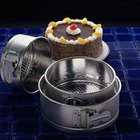
How to Make Lasagna Pie in a Springform ...

Brownie Bottom Butterscotch Cheesecake ...

How to Make a Water Bath for Baking

How to Cook Cheesecake in a Cupcake Pan
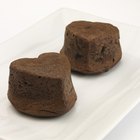
What Is a Souffle Dish?
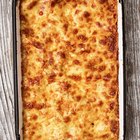
How Many Calories are in Cheese Lasagna?
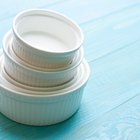
Things to Bake in Ramekins
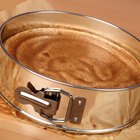
How to Make New York Cheesecake
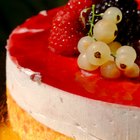
Substitute for a Springform Pan

How to Use a Lattice Pie Cutter
References
- The America's Test Kitchen Family Cookbook; Jack Bishop
Resources
Writer Bio
Andrea Lott Haney writes articles and training materials for food industry publications. Having studied foodservice sanitation, nutrition and menu planning at Purdue University, Lott Haney has more than 10 years of experience as a catering and event planner for luxury hotels and currently tours the Midwest as a corporate customer service trainer and consultant.
Photo Credits
John Foxx/Stockbyte/Getty Images